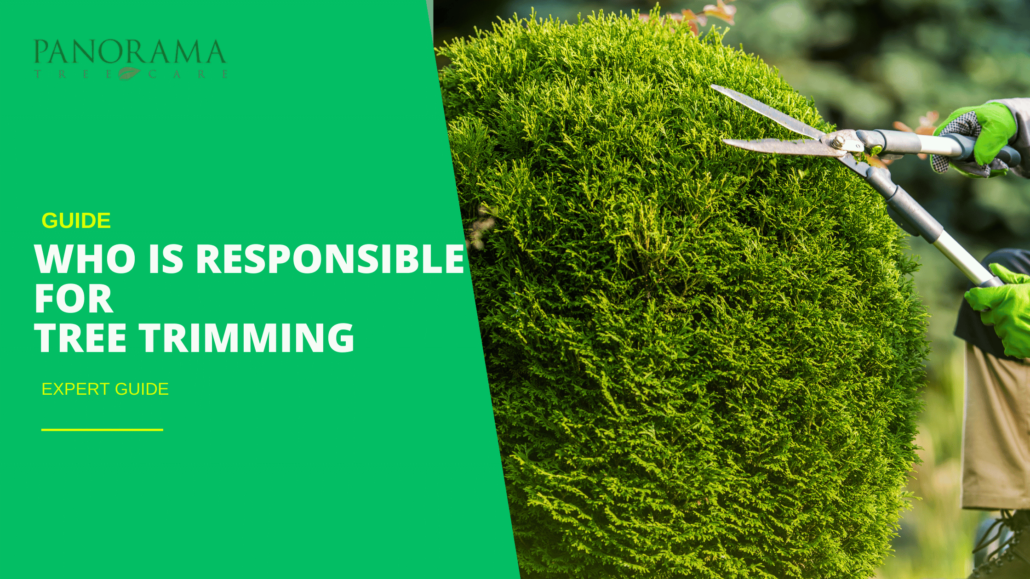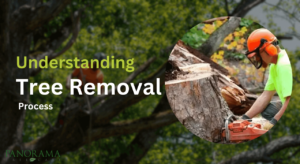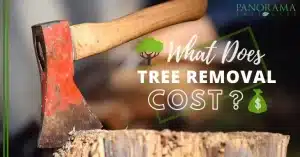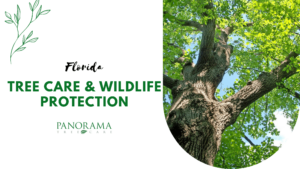Tree trimming is a vital aspect of maintaining the beauty and safety of our environment, especially in a city like Tampa.
Not only does it enhance the aesthetic appeal of properties, but it also ensures safety and compliance with local regulations.
Property Owner Responsibilities
As a property owner in Tampa, you have specific duties when it comes to tree maintenance. Regular trimming and care are crucial to prevent potential hazards and to keep your trees healthy.
Private Property Tree Maintenance Duties:
It’s your responsibility to ensure that the trees on your property are well-maintained.
Regular maintenance involves pruning to remove dead or overgrown branches that can pose risks during storms.
Overgrown branches can become heavy and break off during high winds, potentially causing damage to your home or injuring someone.
Additionally, dead branches can be a breeding ground for pests and diseases that can spread to healthy parts of the tree or even other trees on your property.
Therefore, regular inspections and timely trimming are necessary to keep your trees in good shape and to prevent these issues.
Homeowner Association (HOA) Rules and Regulations:
If you live in a community governed by an HOA, you must follow their specific guidelines regarding tree maintenance.
These rules often include requirements for tree height, appearance, and the types of trees allowed.
For example, an HOA might restrict the planting of certain types of trees that are known to cause problems with their roots or require that all trees are trimmed to a certain height to maintain a uniform look throughout the neighborhood.
Violating these rules can result in fines or other penalties, so it’s important to be familiar with and adhere to them.
Rental Property Responsibilities:
For landlords, maintaining the trees on rental properties is essential to ensure tenant safety and protect property value.
This means conducting regular tree inspections and hiring professionals to handle any necessary trimming or removal.
Neglecting this responsibility can lead to hazardous conditions, such as fallen branches that could injure tenants or damage the property, leading to costly repairs and potential legal issues.
Tenants also have a role to play. They should report any tree issues to their landlords promptly.
If a tenant notices a dead branch hanging precariously or a tree that looks diseased, they should inform the landlord immediately so that the problem can be addressed before it escalates.
City of Tampa’s Role in Tree Trimming
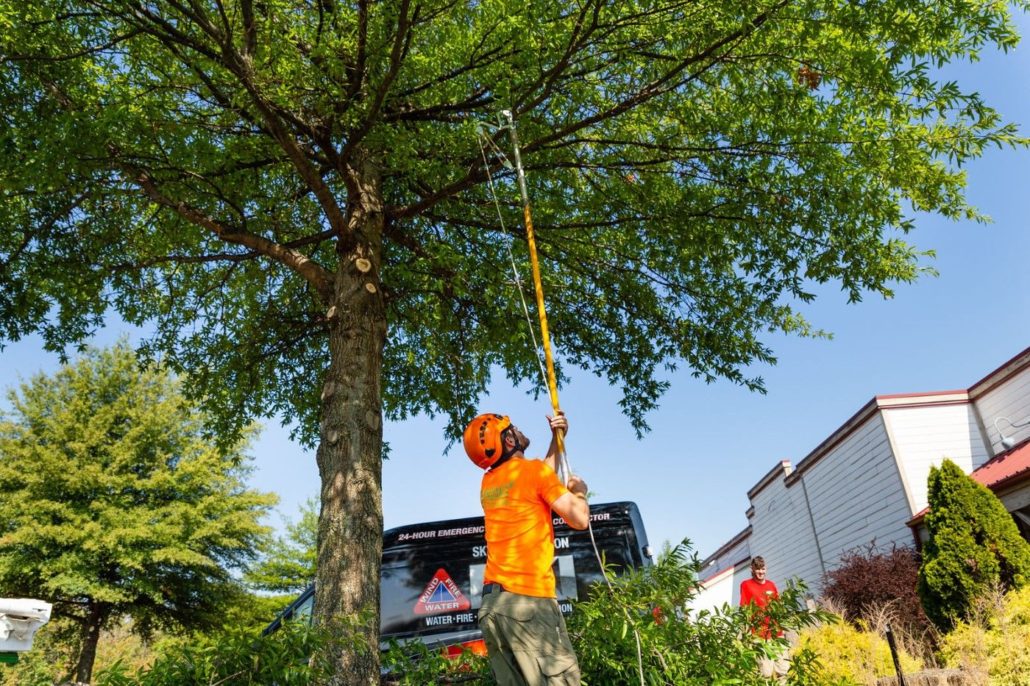
The City of Tampa plays a significant role in managing trees on public property and enforcing regulations.
Public Property and Street Tree Maintenance:
The city is responsible for maintaining trees on public property, including streets and parks.
They handle trimming, removal, and care of these trees to ensure public safety and compliance with city ordinances.
This involves regular inspections and proactive maintenance to prevent tree-related hazards, such as falling branches that could obstruct roads or pose risks to pedestrians.
City Ordinances Regarding Tree Care and Removal:
Tampa has specific ordinances that govern tree care and removal. These regulations are designed to protect the city’s tree canopy and ensure that tree work is done safely and responsibly.
For instance, certain tree species might be protected, and removing them without a permit can result in fines.
Additionally, there might be rules about how much of a tree can be trimmed at one time to avoid harming the tree.
Permit Requirements for Tree Work:
In many cases, you need a permit to trim or remove trees on your property. This is particularly true for large or historically significant trees.
The permitting process ensures that tree work is carried out according to city standards and that the tree canopy is preserved.
Always check with the city before starting any major tree work to avoid potential fines or other legal issues.
Utility Company Responsibilities
Tree trimming near power lines and other utilities is a critical safety concern.
Tree Trimming Near Power Lines and Utilities:
Utility companies are responsible for trimming trees that are close to power lines to prevent outages and hazards.
Trees growing too close to power lines can cause power outages or even start fires if they come into contact with the wires.
Utility companies regularly trim these trees to maintain a safe clearance.
Coordination Between Property Owners and Utility Companies:
If you have trees near power lines, it’s important to coordinate with utility companies.
They often have specific guidelines and schedules for trimming these trees. Property owners should avoid trimming these trees themselves, as it can be dangerous.
Instead, contact the utility company to handle the work safely.
Shared Responsibilities and Grey Areas
Sometimes, tree trimming responsibilities can fall into grey areas, especially when it comes to boundary trees and neighbor disputes.
Boundary Trees and Neighbor Disputes:
Trees located on or near property lines can be a source of conflict. It’s crucial to communicate with your neighbors and come to an agreement on how to handle these trees.
If a tree is on the boundary line, both property owners typically share responsibility for its maintenance.
It’s best to work together to ensure the tree is cared for properly.
Overhanging Branches on Adjacent Properties:
If a tree’s branches extend onto your neighbor’s property, you have the right to trim them back to the property line, as long as it doesn’t harm the tree.
However, it’s a good practice to inform your neighbor before doing any trimming. This can help avoid disputes and maintain good relations.
When to Consult an Arborist or Legal Professional:
In complex situations, such as disputes or significant tree health concerns, it’s wise to consult an arborist or legal professional for advice.
An arborist can provide expert recommendations on tree care, while a legal professional can help resolve disputes and clarify responsibilities.
Professional Tree Services in Tampa
Hiring a professional tree trimming service can save you time and ensure the job is done correctly.
Benefits of Hiring Certified Arborists:
Certified arborists have the knowledge and experience to handle tree care safely and effectively. They can diagnose tree health issues, recommend the best care practices, and perform the work safely.
Arborists are trained to understand the needs of different tree species and can provide specialized care to keep your trees healthy.
Introduction to Panorama Tree Care’s Services:
At Panorama Tree Care, we offer a wide range of tree services, including trimming, removal, and health assessments.
Our team is licensed and insured, ensuring your peace of mind. We use the latest techniques and equipment to provide top-quality tree care services, helping you maintain the beauty and safety of your property.
Choosing a reliable tree trimming company Tampa gives homeowners peace of mind knowing their trees are handled by experienced, fully insured professionals who understand local regulations and tree species.
Importance of Proper Insurance and Licensing:
Always hire tree trimming services that are properly insured and licensed to protect yourself from liability and ensure high-quality work.
Hiring an unlicensed or uninsured service can result in subpar work and leave you responsible for any damages or injuries that occur during the job.
Tree Trimming Best Practices
Understanding the best practices for tree trimming can help you maintain healthy and beautiful trees.
Seasonal Considerations for Tree Trimming in Tampa: Different seasons call for different tree care practices. For example, it’s best to trim most trees during their dormant season to minimize stress and disease risk.
Common Tree Species in Tampa and Their Specific Needs: Tampa is home to various tree species, each with its own care requirements. For instance, live oaks and palm trees have different pruning needs and schedules.
Tips for Maintaining Tree Health and Safety: Regular inspections, proper pruning techniques, and addressing pest issues promptly are key to maintaining tree health.
Whether it’s seasonal pruning or storm preparation, our local tree trimming services in Tampa are tailored to the needs of your trees and neighborhood.
FAQs About Tree Trimming Responsibility in Tampa
Here are some common questions property owners in Tampa have about tree trimming responsibilities:
Who is responsible for trimming trees near power lines?
Utility companies handle this to ensure safety.
Do I need a permit to trim or remove a tree on my property?
Yes, for certain trees, especially large or historic ones. Always check with the city first.
What should I do if my neighbor’s tree branches hang over my property?
You can trim the branches back to the property line, but ensure you do not harm the tree.
Conclusion
Maintaining trees in Tampa means more than just trimming branches—it requires knowing your responsibilities, following city guidelines, and partnering with the right professionals. Let our certified arborists take the guesswork out of your tree care.
Contact Panorama Tree Care today to schedule your consultation and ensure your trees are safe, healthy, and fully compliant with local standards.

